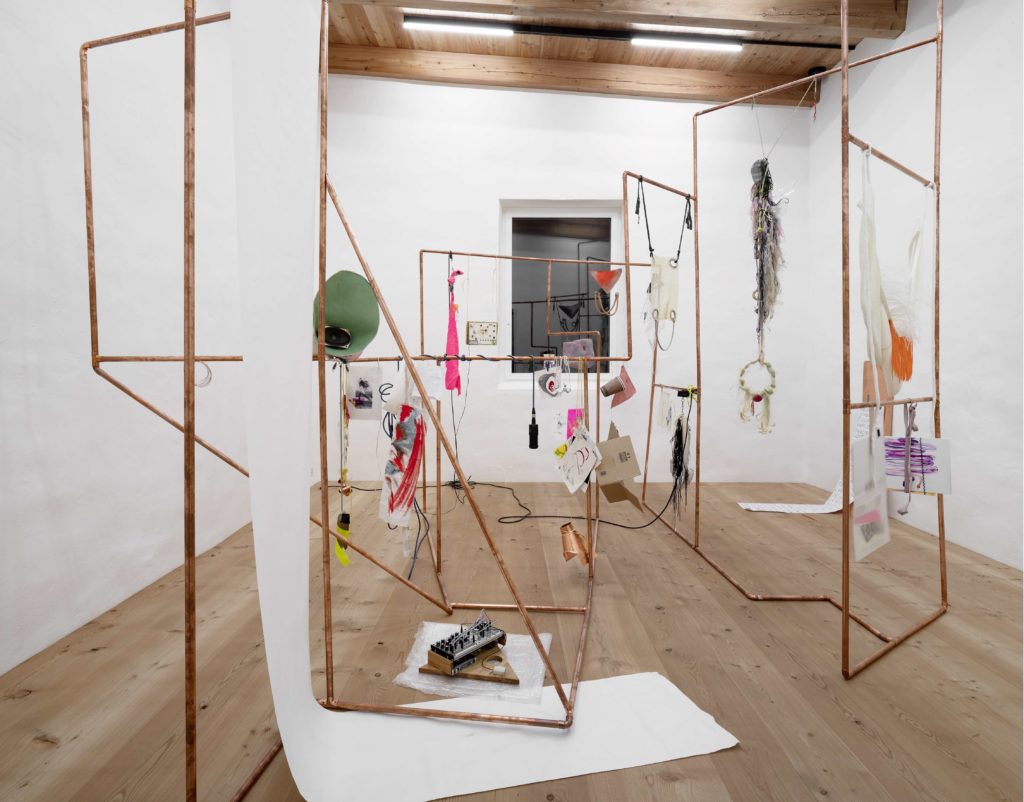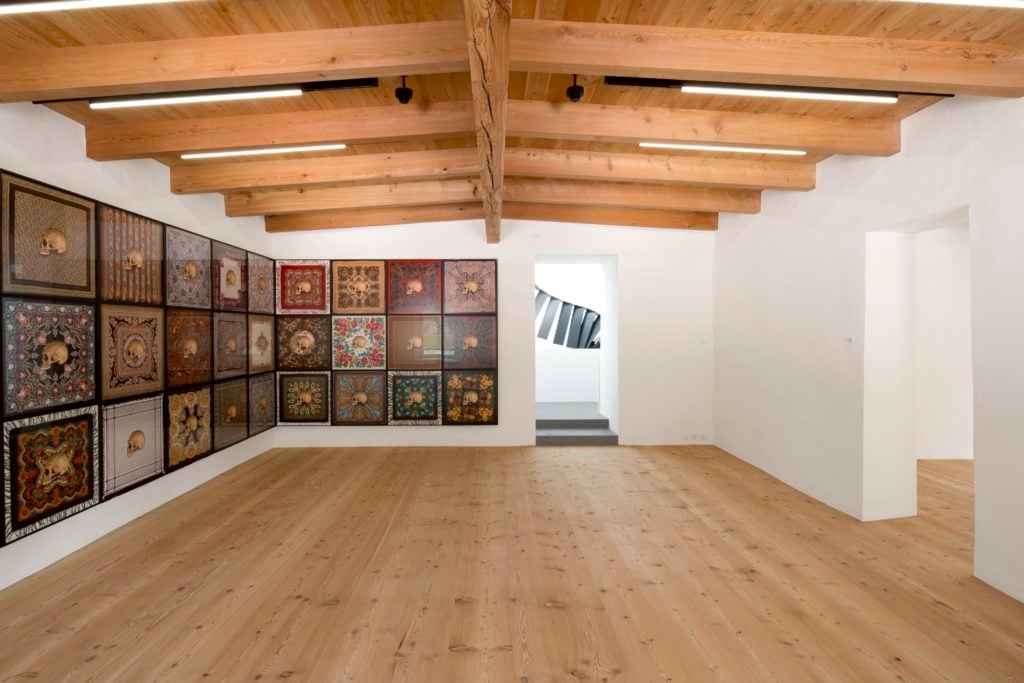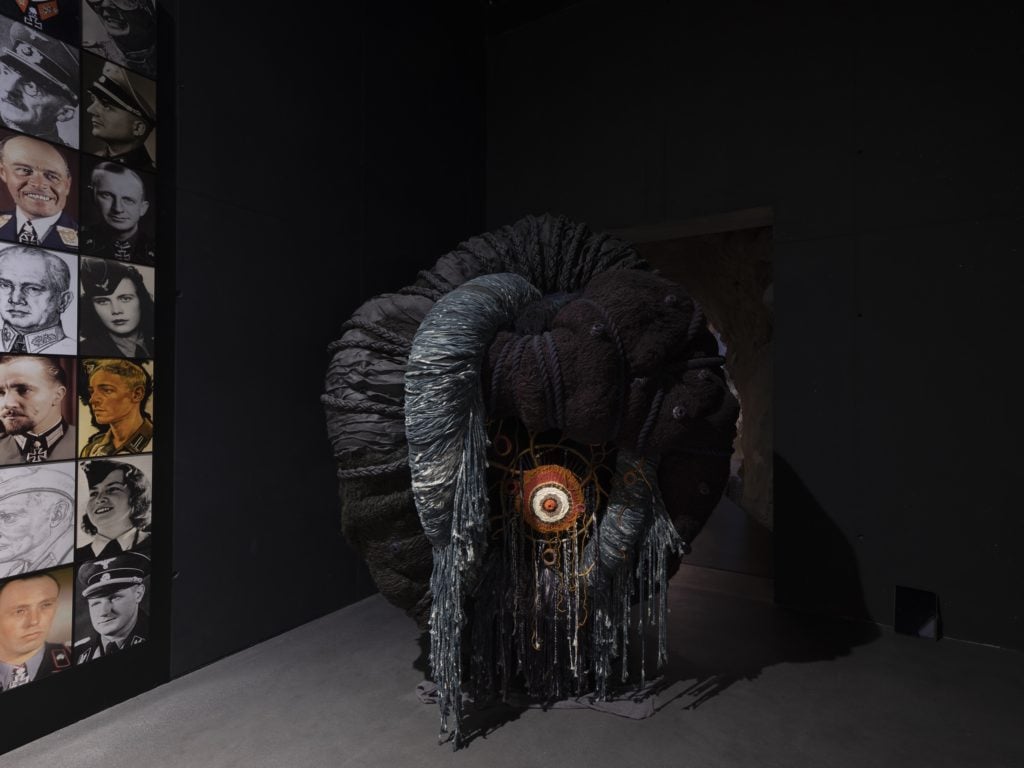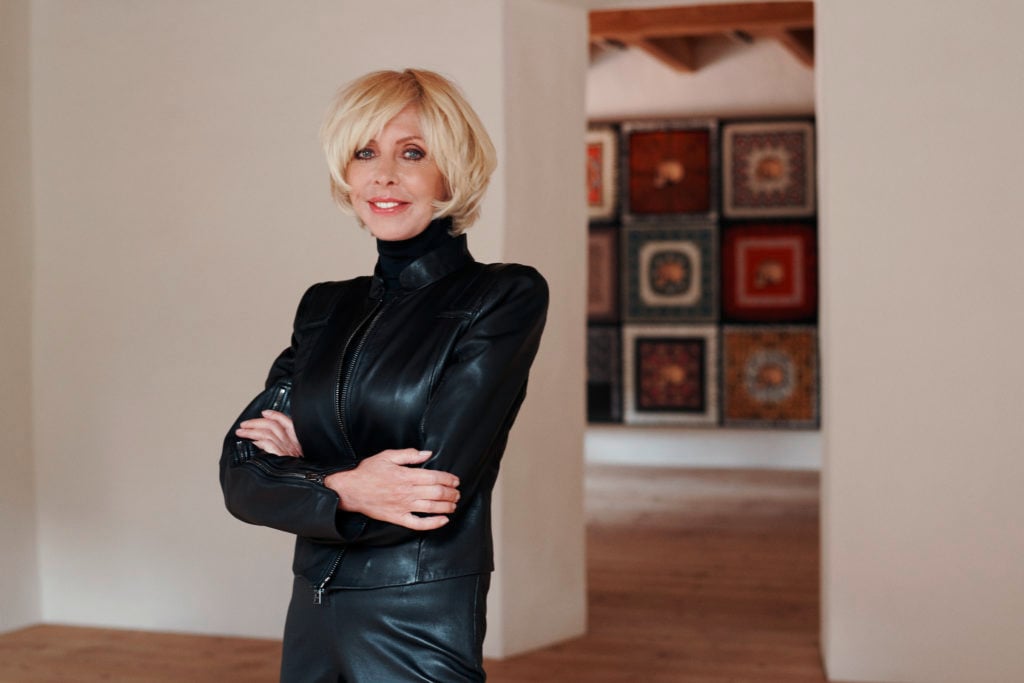When I opened Muzeum Susch in January 2019, I was convinced that the museum of the future would be more likely to thrive on the periphery than in the center.
I hoped to create a place where a dedicated public could engage in a modern pilgrimage. The concept echoes the monastic history of Susch, Switzerland, which was once an important rest stop on the ancient pilgrim route to Santiago de Compostela. From the very beginnings of planning my institution, I proposed an approach called “slow art”—the idea that it’s the quality, not quantity, of art-looking that matters. In 2019, 25,000 visitors took the time and the effort to join us on this journey.
I strongly believe that no digital presence can substitute for the actual experience of a place, especially a place of almost mystical energy like Susch, where, in the face of its imposing Alpine mountains, our common sense of time seems to disappear.

Muzeum Susch. Image courtesy of Muzeum Susch.
But of course, when I embraced slow art and opposed the instantaneous and superficial consumption of art through social media, livestreams, and the subjective eyes of so-called influencers, I could not see this moment coming. Museum doors are closed during the lockdown, and solitary digital experiences and exchanges have become a vital substitute for museum visits while we are physically barred.
And while we are forced to “exist” online—and I am committed to offering continued accessibility through virtual solutions—I do not believe that these alternatives will ever holistically replace the in-person experience of art.
We don’t know what the art world will look like on the other side or who will survive. Reports by Comité Professionnel des Galeries d’Art have shown that a third of galleries in France are at risk of permanent closure, and the International Council of Museums has reported that one in ten museums may not reopen.
But it will always be important to see art in person. The in-person art experience can manifest in the serendipity of discovering new artworks and artists—something that is almost impossible in virtual echo chambers that reflect what we ask to see, which is often what we already know.
The sustainability of the cultural ecosystem at large is reliant on the connection among art, ideas, and people. The collapse of these structures would be an existential threat not only to the market, but to the whole system. Buying and selling art is a vital part of the art world, no matter how we judge the intentions of the sellers and the buyers, and it needs to be sustained.

Chicks on Speed, Noise Bodies (2019), installation view at Muzeum Susch. Photo: Maja Wirkus
All the while, with the sudden slowing down of life that we are all experiencing, we need to find ways of coping with solitude and stillness. The Finnish architect Juhani Pallasmaa, who has been providing thoughtful guidance throughout my work with architecture, wrote: “A powerful architectural experience silences all external noise; it focuses our attention on our very existence, and as with all art, it makes us aware of our fundamental solitude.”
At Muzeum Susch, this concept is expressed through what has informally been named the “weeping room”: the grotto is a dramatic space that breaks from the white gallery rooms with water flowing freely and shares with visitors the mystical energy that first drew me to Susch. Art in this setting is imbued with new meaning and context, conditions that ask for stillness, contemplation, and introspection.
We must listen carefully to artists, whose making is intrinsically linked to the notion of our fundamental solitude, while in looking at and talking about art, we create the world as something we have in common. I have worked to foster such experiences remotely while acknowledging that simply viewing art on a screen is not impactful. For instance, our new podcast series “Stillness & Motion” is bringing together the voices of visual artists and poets, authors and critics, choreographers and dancers—all meditating on the notion of stillness as a performative and a visual gesture. Right now, it seems even more important to make these voices heard, and to have the artists commissioned to participate and remunerated for their time.

Zofia Kulik, Ethnic Wars. Large Vanitas Still Life. Courtesy Studio Stefano Graziani, Muzeum Susch/Art Stations Foundation CH
If there is something we can take from this crisis, it is a new sense of community that might help us to sustain the dignity of something as essential as art and to insist on the essential public function of museums. I also hope that, when we can eventually return to museums and galleries, we will have learned from this situation, and will return to art with a fresh appetite for engagement and new ways of looking, taking the time to really appreciate what is there in front of us now that we have known what it is like when art is not so readily available in all its physical forms.
For years, reports have shown that museum visitors spend between 15 to 30 seconds on a single piece of art. Before the pandemic, people largely found themselves to be time-poor. My hope is that we take newly learned coping mechanisms from this time in waiting into the new reality ahead. Ideally, that means spending more time on individual works, giving them the time to move us, even if we end up seeing less overall. There is a poetic reciprocity in this interaction.

Piotr Uklański Untitled (Story of the Eye). Courtesy Studio Stefano Graziani, Muzeum Susch/Art Stations Foundation CH
Thankfully, in Switzerland museums are to reopen sooner than planned and Muzeum Susch will open its doors to the public again on May 14, with the necessary precautions in place of course (increased social distancing, readily available sanitizer, allotted visiting times, visitors numbers restricted, and so on). And we will continue to provide remotely accessible means to engage with the museum as the rest of the world begins to leave this period of isolation.
For the time being, from the unique Alpine scenery of the Engadin, I would like to invite you to embark with us on imaginary journeys—trips into worlds of sounds, memories and readings—until we can meet again in the emancipatory embrace of physical presence.











